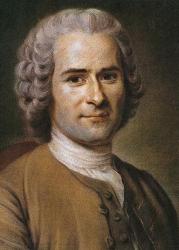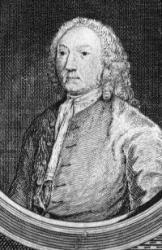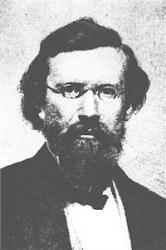Planning worship?
Check out our sister site, ZeteoSearch.org,
for 20+ additional resources related to your search.
- |
User Links
Person Results
‹ Return to hymnal





Export as CSV
Johann Hermann Schein

1586 - 1630 Person Name: I. H. Schein Hymnal Number: 21 O hen Alaw gan of "ST. BARNABAS" in Hymnau a thonau at wasanaeth amrywiol gyfarfodydd y cysegr Schein, Johann Hermann, son of Hieronymus Schein, pastor at Griinhain, near Annaberg, in Saxony, was born at Grünhain, Jan. 20,1586. He matriculated at the University of Leipzig in 1607, and studied there for four years. Thereafter he acted for some time as a private tutor, including two years with a family at Weissenfels. On May 21, 1615, he was appointed Capellmeister, at the court of Duke Johann Ernst, of Sachse-Weimar; and in 1616 he became cantor of I3t. Thomas's Church, and music director at Leipzig, in succession to Seth Calvisius (d. Nov. 24, 1615). This post he held till his death, at Leipzig, Nov. 19, 1630.
Schein was one of the most distinguished musicians of his time, both as an original composer, and as a harmoniser of the works of others. As a hymnwriter he was not so prolific, or so noteworthy. Most of his hymns were written on the deaths of his children or friends, e.g. on seven of his children, and on his first wife. They appeared mostly in broadsheet form, and were included, along with his original melodies, in his Cantional oder Gesang-Buch Augspurgischer Confession, Leipzig, 1627; 2nd ed., 1645. [Both in Wernigerode Library.]
Those of Schein's hymns which have passed into English are:—
i. Machs mit mir, Gott, nach deiner Güt. For the Dying. First published, as a broadsheet, at Leipzig, 1628, as a Trost-Liedlein á 5 (i.e. for 5 voices), &c. [Berlin Library.] The words, the melody, and the five-part setting, are all by Schein. It was written for, and first used at, the funeral, on Dec. 15, 1628, of Margarita, wife of Caspar Werner, a builder and town councillor at Leipzig, and a churchwarden of St. Thomas's. It is in 6 stanzas of 6 lines; the initial letters of 11. 1, 3, in st. i.-iv., forming the name Margarita; and the W of st. v. 1. 1 standing for Werner. In Schein's Cantional, 1645, No. 303 (marked as Trost-Liedlein, Joh. Herm. Scheins, á 5), and later hymn-books, as e.g. the Unverfäschter Liedersegen, 1851, No. 830, st. vi. was omitted. It is Schein's finest production, and one of the best German hymns for the sick and dying. Translated as:—
Deal with me, God, in mercy now. This is a good and full translation by Miss Winkworth, in her Chorale Book for England, 1863, No. 191, set to Schein's melody of 1628.
ii. Mein Gott und Herr, ach sei nicht fern. For the Dying. First published, with his name, in his Cantional, 1627, No. 262, in 9 stanzas of 6 lines. The initial letters of the stanzas give the name Margarita, probably one of the daughters who predeceased him. It is included, in 5 st., in the 164-8, and later eds., of Crüger's Praxis. The translation in common use is:—
My Lord and God, go not away. A good tr. of st. i., ii., iv., v., vii., by A. T. Russell, as No. 254, in his Psalms & Hymns, 1851. [Rev. James Mearns, M.A.]
--Excerpts from John Julian, Dictionary of Hymnology (1907)
Johann Hermann Schein
John Stanley
1712 - 1786 Hymnal Number: 28 Composer of "CALFARI" in Hymnau a thonau at wasanaeth amrywiol gyfarfodydd y cysegr b. 1/17/1712 in London; d. 5/19/1786 in London; English composer and organist
John Stanley
John J. Husband
1760 - 1825 Person Name: J. J. Husband Hymnal Number: 170 Composer of "Y CEIDWAD A GAED" in Hymnau a thonau at wasanaeth amrywiol gyfarfodydd y cysegr Rv John Jenkins Husband United Kingdom 1760-1825. Born in Plymouth, England, he worked as a clerk at Surrey Chapel. He emigrated to the U.S. in 1809 and taught music in Philadelphia, PA. It is surmised that he married Anna Elizabeth Kirkhum, but no other family information was found. An author and composer, he also worked as a clerk at St. Paul’s Protestant Episcopal Church. In 1807 he published “A collection of hymns & Psalms for the use of singing school & musical societies”. He died in Philadelphia, PA.
John Perry
John J. Husband
R. H. Meredith
Person Name: R. H. M. Hymnal Number: 370 Arranger of "[I've seen the lightning flashing]" in Hymnau a thonau at wasanaeth amrywiol gyfarfodydd y cysegr
R. H. Meredith
R. J. Jones
Hymnal Number: 363 Efel. of "Fy Iesu, Fe'th Garaf" in Hymnau a thonau at wasanaeth amrywiol gyfarfodydd y cysegr R. J. Jones, Chicago
(Old and New Welsh and English Hymns, 1939)
R. J. Jones
Charles H. Purday
1799 - 1885 Person Name: C. H. Purday Hymnal Number: 16 Composer of "SANDON" in Hymnau a thonau at wasanaeth amrywiol gyfarfodydd y cysegr Charles H. Purday (1799-1885) A publisher, composer, lecturer, and writer, Purday had a special interest in church music. He published Crown Court Psalmody (1854), Church and Home Metrical Psalter and Hymnal (1860), which included SANDON, and, with Frances Havergal, Songs of Peace and Joy (1879). A precentor in the Scottish Church in Crown Court, London, Purday sang at the coronation of Queen Victoria. In the publishing field he is known as a strong proponent of better copyright laws to protect the works of authors and publishers.
Bert Polman
Charles H. Purday
Jean-Jacques Rousseau

1712 - 1778 Person Name: J. J. Rousseau Hymnal Number: 355 Composer of "GREENVILLE" in Hymnau a thonau at wasanaeth amrywiol gyfarfodydd y cysegr Jean Jacques Rousseau; b. 1712, Geneva; d. 1778, Paris. Born in the city-state of Geneva in the Swiss Confederacy, his mother died whenhe was 9 days old. Rousseau's father was a watchmaker, but got into trouble with local officials and left the town, leaving his son with an uncle who had Rousseau and his own son board with a Calvinist minister for 2 years. He was later apprenticed to a notary and then to an engraver, who beat him. He ran away from Geneva at 16. In nearby Savoy, he sheltered with a Roman Catholic priest. He was sent to Italy to convert to Catholicism. He supported himself as a servant, secretary, and tutor. His life was filled with personal and political upheaval, and his writings infuriated many, to the point he had to leave several habitations. He had many friends and enemies due to his philosophies on life, religion, and God. He was concerned with decay of society (having experienced the French Revolution) and became a philosopher, writer, botanist, and composer, he influenced the Enlightenment period through his political philosophy, both in France and across Europe, including aspects of the French Revolution and overall development of modern political and educational thought. A member of the Jacobin Club, he was the most popular of philosophers. He believed that self-preservation was the highest virtue and that we should study to understand how society operates and where pitfalls lie. His personal family life was very chaotic as a result of his outspoken opinions and writings. He returned to his Calvinistic beliefs in later life, but digressed from them on several issues important to that church.
John Perry
Jean-Jacques Rousseau
William Knapp

1698 - 1768 Person Name: W. Knapp Hymnal Number: 44 F.t. of "WAREHAM" in Hymnau a thonau at wasanaeth amrywiol gyfarfodydd y cysegr Born: 1698, Wareham, Dorsetshire, England.
Died: September 26, 1768, Poole, Dorsetshire, England.
Buried: Poole, Dorsetshire, England.
William Knapp
Carl Maria von Weber

1786 - 1826 Person Name: Von Weber Hymnal Number: 148 Composer of "SEYMOUR" in Hymnau a thonau at wasanaeth amrywiol gyfarfodydd y cysegr Carl Maria von Weber; b. 1786, Oldenburg; d. 1826, London
Evangelical Lutheran Hymnal, 1908
Carl Maria von Weber
Joseph Philbrick Webster

1819 - 1875 Person Name: J. P. Webster Hymnal Number: 258 Composer of "YN Y MAN" in Hymnau a thonau at wasanaeth amrywiol gyfarfodydd y cysegr Webster composed and performed popular music. He studied with Lowell Mason and was active musically in New York, New Jersey and Connecticut, and directed a quartet company called the Euterpeans. In 1851, he moved to Madison, Indiana, followed by Chicago, Illinois (1855); Racine, Wisconsin (1856); and finally Elkhorn, Wisconsin (1859).
Webster wrote over a thousand ballads and many hymns. His most famous secular song was his 1857 Lorena (words by Henry D. L. Webster). In its day, it was said to have been second in popularity only to Stephen Foster’s Suwanee River, and was sung by thousands of soldiers on both sides of the American civil war. An instrumental version appears in the 1939 film Gone with the Wind, when Scarlett O’Hara is manning the stall at the charity dance in her mourning outfit. The tune also made an appearance in two John Ford films: The Searchers, 1956, arranged by Max Steiner, and The Horse Soldiers, 1959, arranged by David Buttolph.
(http://www.hymntime.com/tch)
Joseph Philbrick Webster


 My Starred Hymns
My Starred Hymns


